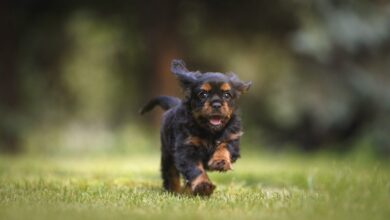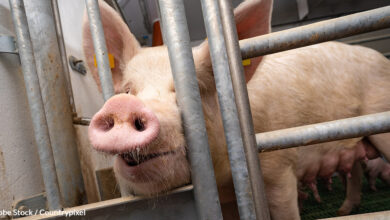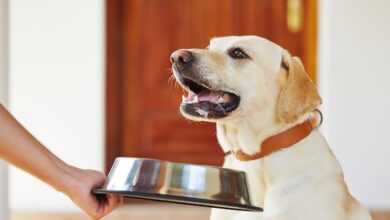The History and Origin of the Bloodhound: A Comprehensive Look
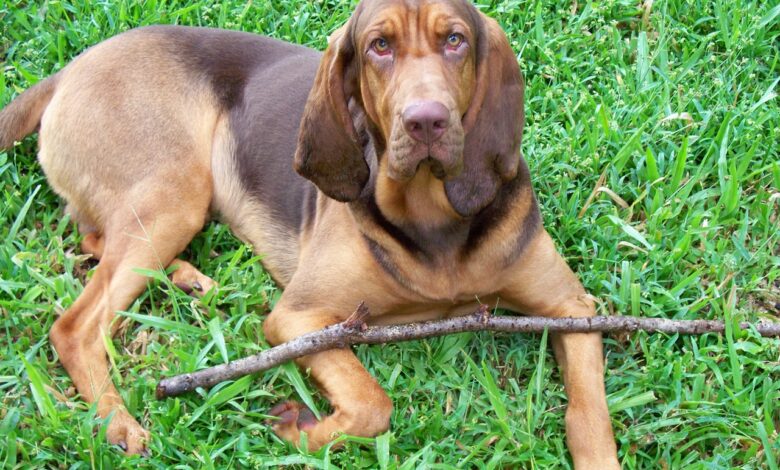
The Bloodhound, renowned for its unparalleled scent-tracking ability, has a storied history that weaves through centuries and continents, leaving a profound impact on canine and human societies alike. This breed, distinguished by its noble bearing, sagacious expression, and powerful olfactory prowess, traces its origins back to the medieval period when it was esteemed by aristocrats and hunters for its tracking capabilities. The Bloodhound’s ancestry is believed to stem from hounds kept by monks in St. Hubert’s Abbey in Belgium around the 8th century, which were later refined in England and France to develop the breed known today. Their name, often misconstrued as relating to an affinity for tracking blood, actually derives from their status as the “blooded hounds,” indicating their purebred lineage. Throughout history, Bloodhounds have been utilized in roles ranging from game tracking to law enforcement, where they assist in search and rescue operations and criminal investigations. Their acute sense of smell, capable of discerning individual human scents over great distances and time, has made them invaluable in forensic applications. This comprehensive look into the Bloodhound’s origin and history reveals not just the evolution of a breed but the unfolding of a fascinating symbiotic relationship between humans and dogs, highlighting the Bloodhound’s significant contributions to society and its enduring legacy as a symbol of fidelity, perseverance, and exceptional sensory talent.
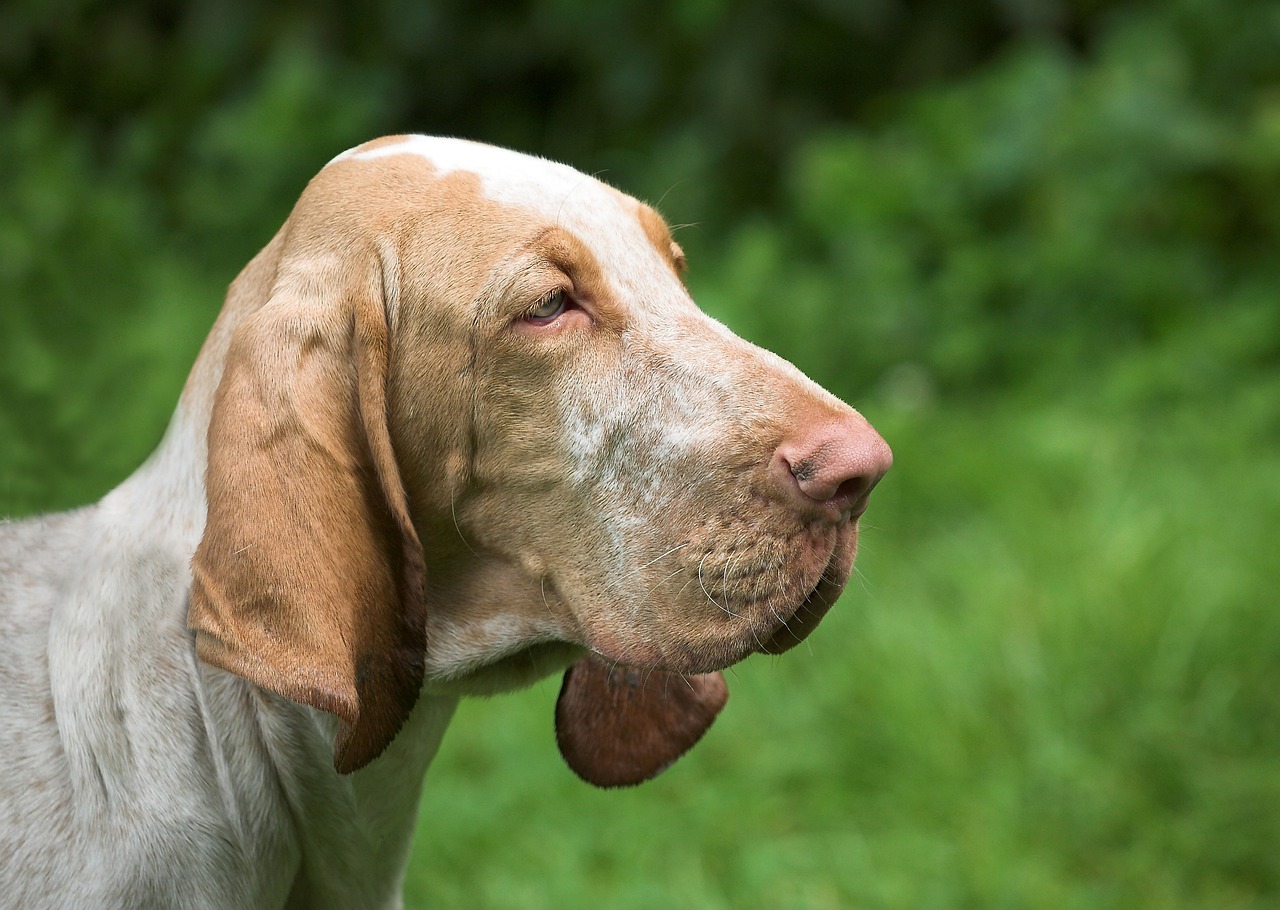
The Ancient Roots and Medieval Development
The Bloodhound’s lineage can be traced back to ancient hounds that roamed the forests of Europe, but it was during the medieval period that the breed began to take its modern form. Historical records suggest that monks at the Abbey of St. Hubert in present-day Belgium were instrumental in breeding the early precursors to the Bloodhound. These hounds were revered for their tracking ability, which was essential for hunting game in the dense European forests. The monks’ dedication to improving the breed’s olfactory capabilities and temperament laid the foundation for the Bloodhound’s exceptional tracking skills. By the time these hounds reached England and France, their reputation had grown, and they were highly sought after by nobility and hunters alike.
The Bloodhound’s Role in Society and Law Enforcement
Over the centuries, the Bloodhound has played various roles in society, evolving from a hunter’s companion to a valuable asset in law enforcement and search and rescue operations. Their unparalleled scent-tracking ability has been utilized in tracking missing persons, escaped prisoners, and even in solving crimes. In the 19th century, Bloodhounds were famously employed by law enforcement agencies, particularly in the United States, where their skills were used to track fugitives. This period marked a significant shift in the breed’s function, from sporting and hunting to serving the public and aiding in forensic investigations. The Bloodhound’s contribution to law enforcement showcases the breed’s adaptability and the deep trust humans have placed in their canine companions’ abilities.
The Bloodhound in Popular Culture and Modern Times
The Bloodhound’s distinctive appearance and remarkable skills have cemented its place in popular culture. Literature, film, and television have often portrayed the breed as the quintessential detective dog, capable of solving mysteries with its keen sense of smell. Beyond their cultural representation, Bloodhounds continue to serve in various capacities today, from participating in competitive tracking events to working with law enforcement agencies around the world. Their role in conservation efforts, particularly in tracking poachers and locating endangered species, highlights the breed’s versatility and the ongoing relevance of their extraordinary sensory skills in addressing contemporary challenges.
Bloodhound’s history and origin story is a testament to the breed’s enduring legacy and the profound bond between humans and dogs. From their early development in medieval Europe to their modern roles in society, Bloodhounds have demonstrated time and again their unparalleled tracking abilities, adaptability, and deep connection to their human counterparts. Their contribution to society, both in historical and modern contexts, underscores the importance of preserving and celebrating this remarkable breed for generations to come.
Frequently Asked Questions About The History of Bloodhounds

1. Where did Bloodhounds originally come from?
Bloodhounds have a rich history that traces back to medieval Europe, with their origins most closely linked to the monasteries of St. Hubert in Belgium and later France. These hounds were initially bred by monks around the 8th century, to develop a dog with a keen sense of smell to track game. Over time, these early hounds were refined and became known for their exceptional tracking abilities, leading to their spread across Europe. The Bloodhound we recognize today was further developed in England, where they were valued not only for hunting but also for their ability to track people. The breed’s name, “Bloodhound,” refers not to their tracking of blood but to their status as “blooded” or purebred hounds, highly esteemed by the nobility for their pedigree and tracking prowess.
2. How did Bloodhounds contribute to law enforcement history?
Bloodhounds have made significant contributions to law enforcement due to their unparalleled scent-tracking ability. Historically, these dogs have been used to track down escaped prisoners, and missing persons, and even to assist in solving crimes. Their keen sense of smell, which allows them to follow a scent trail for miles and even days after it was made, made them invaluable in search and rescue missions as well as in tracking fugitives. In the 19th and early 20th centuries, Bloodhounds were notably employed by police forces and search parties in both Europe and the United States. Their work in law enforcement highlighted the breed’s adaptability and the deep trust placed in their capabilities, cementing their role as one of the first canine breeds to be used in forensic and police work. This legacy continues today, with Bloodhounds serving in various law enforcement and search and rescue capacities around the world.
3. How have Bloodhounds been depicted in popular culture?
Bloodhounds have a storied presence in popular culture, often depicted as the quintessential detective dog due to their exceptional tracking abilities. They have appeared in numerous literary works, films, and television shows, frequently portrayed as the heroes of the narrative, using their keen sense of smell to solve mysteries and track down criminals. One of the most famous depictions of a Bloodhound in literature is the character of Toby in Sir Arthur Conan Doyle’s “Sherlock Holmes” series, where the dog’s tracking skills are employed to solve crimes. In animation and children’s literature, Bloodhounds are often depicted as lovable, droopy-faced detectives, further cementing their association with investigation and tracking. This portrayal in popular culture has contributed to the Bloodhound’s enduring popularity and public image as a diligent and dependable tracker.
4. What are some unique characteristics of Bloodhounds?
Bloodhounds possess several unique characteristics that set them apart from other breeds. Their most notable attribute is their extraordinary sense of smell, considered the most acute among all dog breeds. This enables them to follow a scent trail for miles and even several days after it has been laid. Physically, Bloodhounds have a distinctive appearance with loose, wrinkled skin around their face and neck, long drooping ears, and deep-set eyes, all of which enhance their scenting ability by helping to trap scent particles. They have a large, muscular build, enabling them to traverse difficult terrain when tracking. Bloodhounds are also known for their gentle, patient, and affectionate nature, making them excellent companions. Despite their powerful tracking skills, they are remarkably friendly and good-natured with both humans and other animals, showcasing a versatile temperament that balances their working prowess with a placid domestic side.
5. How has the role of Bloodhounds evolved?
The role of Bloodhounds has evolved significantly over the centuries. Initially bred by monks for hunting purposes, their exceptional tracking abilities soon found a broader application in various facets of human society. In medieval Europe, they were used by nobility for hunting games, but as their reputation grew, so did their roles. By the 19th century, Bloodhounds were employed in law enforcement and search and rescue missions, leveraging their scenting ability to track fugitives and find missing persons. Today, while they still serve in these traditional roles, Bloodhounds also participate in competitive tracking events, work in conservation efforts to track poachers and find endangered species, and act as therapy and service dogs. Their adaptability and keen olfactory senses have allowed them to remain relevant in modern society, showcasing the breed’s enduring utility and the deep bond between humans and dogs.
6. What challenges did Bloodhounds face throughout history?
Throughout history, Bloodhounds have faced several challenges, from shifts in societal roles to breed-specific health issues. In the past, as hunting with dogs fell out of favor and the use of firearms became more prevalent, the demand for Bloodhounds and their tracking skills declined. This led to a decrease in their numbers and a period where the breed’s future was uncertain. Additionally, the Bloodhound’s unique physical characteristics, such as their large size, drooping ears, and loose skin, predispose them to certain health problems, including ear infections, skin fold dermatitis, and bloat, which is a serious condition that affects large breeds. Breeding practices have also posed challenges, as maintaining the breed’s genetic purity and exceptional scenting ability while managing health issues requires careful planning and knowledge. Despite these challenges, dedicated breeders and enthusiasts have worked tirelessly to preserve the breed’s qualities, ensuring that Bloodhounds continue to thrive and serve humanity in various capacities.
7. How are Bloodhounds trained for tracking?
Training a Bloodhound for tracking is a meticulous process that capitalizes on their natural scenting abilities. It begins with basic obedience training to establish a foundation of discipline and communication between the dog and the handler. From there, puppies are introduced to scent work through fun and engaging exercises that encourage them to use their nose to find treats or toys. As they mature, the training becomes more structured, with the introduction of specific scents and the practice of following longer and more complex trails. Handlers use a combination of positive reinforcement, patience, and consistency to develop the dog’s tracking skills. The goal is to enhance the Bloodhound’s instincts, enabling them to follow a scent trail over various terrains and in different environmental conditions. Advanced training may involve simulating real-life scenarios, such as finding people in search and rescue missions or tracking scent trails in law enforcement work. The success of Bloodhound training lies in harnessing their innate abilities and channeling them into a disciplined approach to tracking.
8. What is the lifespan and health of Bloodhounds?
Bloodhounds typically have a lifespan of 10 to 12 years, which is common for a breed of their size. However, like all breeds, they are prone to certain health issues that potential owners should be aware of. Their large size makes them susceptible to hip and elbow dysplasia, conditions that affect the joints and can lead to pain and mobility issues. Bloat, or gastric torsion, is another serious health risk for Bloodhounds; this life-threatening condition requires immediate veterinary attention. Their long, droopy ears can trap moisture and lead to ear infections if not properly cleaned and maintained. Additionally, skin fold dermatitis is a concern due to their loose skin. Despite these health challenges, with proper care, regular veterinary check-ups, and a healthy lifestyle, Bloodhounds can lead happy and fulfilling lives. Owners should be prepared to invest time in regular grooming, exercise, and health maintenance to ensure their Bloodhound’s well-being.
9. How did Bloodhounds arrive in the Americas?
Bloodhounds were introduced to the Americas by European settlers and explorers. The breed’s arrival in the New World is believed to have occurred in the 16th century, though the exact timeline is difficult to pinpoint. These early Bloodhounds were primarily used for their tracking abilities in a variety of roles, from hunting to assisting in law enforcement and search and rescue operations. Their reputation for being able to follow a scent trail over long distances made them valuable assets in the expansive and often untamed landscapes of the Americas. Over time, Bloodhounds were bred and adapted to their new environments, contributing to the development of other scent hound breeds in the region. Their introduction to the Americas marked a significant expansion of the breed’s presence worldwide, showcasing their versatility and the high regard in which their tracking abilities were held.
10. What distinguishes a Bloodhound’s sense of smell from other dogs?
A Bloodhound’s sense of smell is distinguished from other dogs by its sheer sensitivity and accuracy. While all dogs have a keen sense of smell, Bloodhounds possess up to 300 million scent receptors in their noses, compared to about 5 million in humans and a lower count in many other dog breeds. This anatomical advantage, combined with their long, droopy ears that help to capture and retain scent particles, and the large, open nostrils that allow for deep inhalations, enables Bloodhounds to pick up and follow scent trails over great distances and after significant amounts of time have passed. Their ability to discriminate between scents is so precise that they can follow a specific individual’s trail through a crowded area and even identify a scent trail days after it was laid. This exceptional olfactory capability has made Bloodhounds invaluable in tracking, search and rescue, and law enforcement roles, where accuracy and the ability to follow a trail over long distances are critical.
11. Can Bloodhounds be kept as family pets?
Bloodhounds can indeed be kept as family pets, and they make wonderful companions for those who understand and can accommodate their needs. Known for their gentle, affectionate, and patient nature, Bloodhounds are good with children and can coexist peacefully with other pets. However, potential owners should be aware of the breed’s requirements, including regular exercise to manage their energy levels and prevent boredom, as well as their need for companionship to avoid separation anxiety. Bloodhounds also require consistent, gentle training from an early age to ensure they develop good manners. Their large size and strength necessitate a living space that can accommodate them comfortably, and their droopy ears and skin folds require regular cleaning to prevent infections. With proper care, training, and socialization, Bloodhounds can be loving and loyal family members.
12. What activities do Bloodhounds enjoy?
Bloodhounds enjoy a variety of activities that cater to their instincts and physical needs. Tracking of scent work is at the top of the list, as it engages their keen sense of smell and provides mental stimulation. Many Bloodhound owners participate in tracking trials or search and rescue training to keep their dogs engaged and active. In addition to scent work, Bloodhounds benefit from regular, moderate exercise such as long walks or hikes, which cater to their stamina and help manage their energy levels. They also enjoy interactive play sessions with their owners, including games that involve finding hidden toys or treats. Despite their size and energy, Bloodhounds are known for their laid-back nature, so they also appreciate downtime and cuddles with their family. Engaging in these activities not only keeps Bloodhounds physically fit but also strengthens the bond between them and their owners.
13. How are Bloodhounds used in conservation efforts?
Bloodhounds are increasingly being used in conservation efforts due to their exceptional tracking abilities. Their keen sense of smell enables them to track the scent of poachers in protected wildlife areas, assisting in the prevention of illegal hunting and poaching. Bloodhounds can follow a trail left by humans or animals over difficult terrain and for days after the scent was laid, making them invaluable in tracking down poachers and locating endangered species that may be hiding or injured. Conservation organizations and wildlife reserves have begun incorporating Bloodhounds into their anti-poaching units, where they work alongside rangers to protect wildlife. Additionally, Bloodhounds are used in research projects to track and collect data on wildlife, contributing to conservation studies and efforts to preserve biodiversity. Their work in conservation highlights the versatility of the breed and the positive impact they can have in protecting the environment and endangered species.
14. What are the grooming requirements for a Bloodhound?
The grooming requirements for a Bloodhound are moderate but essential for their health and comfort. Their short coat is relatively low maintenance and requires regular brushing to remove loose hair and distribute natural oils, which keeps their coat healthy. However, their distinctive physical features, such as the long, droopy ears and the loose skin folds around their face and neck, require special attention. Ears should be checked and cleaned regularly to prevent infections, as their shape can trap moisture and debris. The skin folds may also need to be cleaned and dried to prevent irritation or infection. Additionally, regular nail trimming is important to avoid discomfort and mobility issues. While Bloodhounds are not known for being particularly high-energy dogs, they do drool, so owners may need to wipe their faces periodically. Adhering to these grooming practices will help keep a Bloodhound healthy, comfortable, and ready for their next adventure.
15. How do Bloodhounds interact with other animals?
Bloodhounds are generally good-natured and can get along well with other animals, including dogs and cats, especially if they are raised together or properly socialized from a young age. Their gentle and sociable nature makes them capable of peaceful coexistence with other pets. However, as with any breed, individual temperaments can vary, and some Bloodhounds may have a higher prey drive, leading them to chase smaller animals. Proper introduction and supervision are key when introducing a Bloodhound to other pets. Training and socialization play crucial roles in teaching Bloodhounds appropriate behavior and manners around other animals. With their laid-back demeanor, Bloodhounds can be excellent companions for other pets, often showing patience and affection towards their animal housemates.

